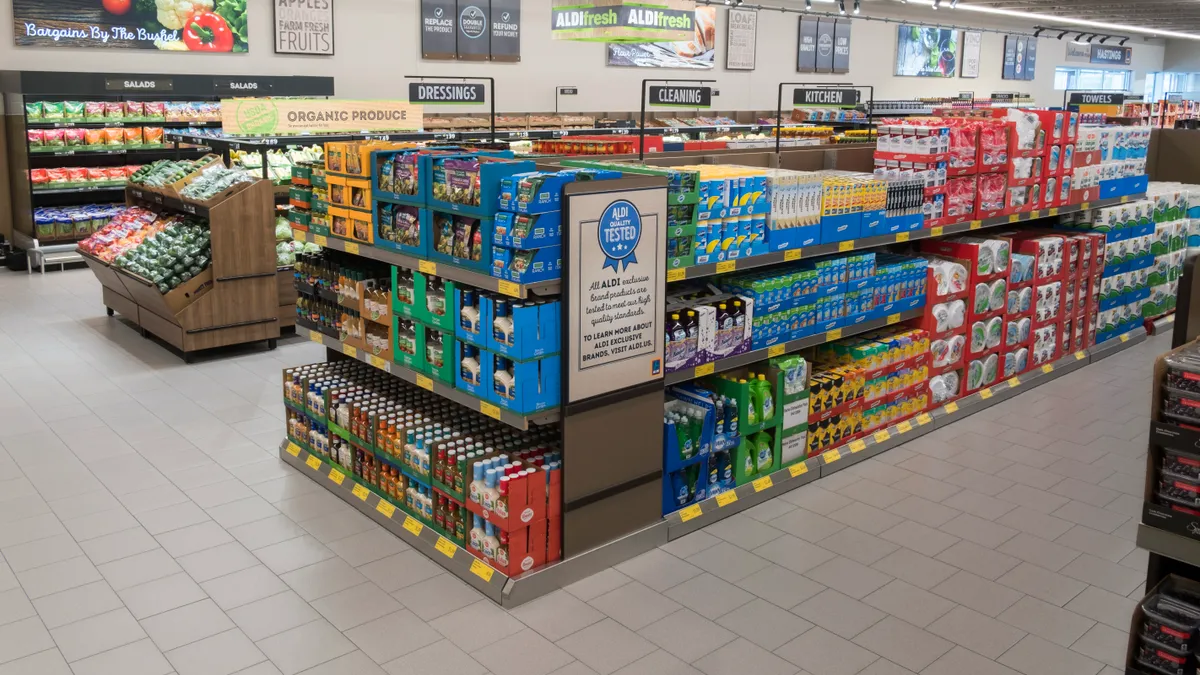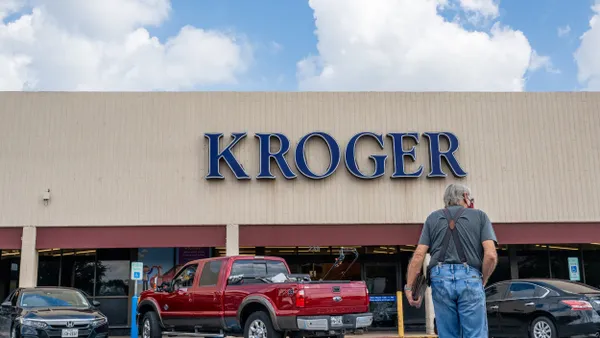Dive Brief:
- Grocery sales rose modestly in May, posting a gain of about 1.3% compared with April as consumers continued their heavy reliance on food retailers to keep stocked, according to estimated data released Tuesday by the U.S. Census Bureau. Across the board, retail sales surged a record 17.7% last month, but remain lower than they were at the same time last year.
- Compared with May 2019, sales for the grocery sector were up 14.4%, as the increase in supermarket spending that began as authorities ordered people to stay home and closed non-essential retailers continued, Census Bureau reported.
- Sales of frozen goods increased 19.2% during the week that ended June 6 compared with the same period in 2019, while dairy sales posted a 14.4% increase and produce sales advanced 14.1%, according to Nielsen. Seafood was the best-performing category, with sales up 40.7%, the market research firm reported.
Dive Insight:
Grocery sales remain on an upward path, but the industry has begun to see sales growth level off as states reopen their economies and people have other additional options for where they purchase food, beverages and other goods.
In March, grocery sales were a lone bright spot in the nation’s retail picture as overall consumer spending collapsed under the growing pressure of lockdowns and store closures brought on by the advancing pandemic. Sales that month zoomed ahead nearly 27% over February and were up almost 30% compared with March 2019, substantially ahead of the figures for May.
Sales for the retail sector as a whole fell 8.7% in March compared with the previous month and were off 6.2% year-over-year, the Census Bureau reported in April, illustrating the generally bleak economic landscape facing the nation in the early weeks of the health crisis.
The picture has changed substantially since then as retailers other than grocery stores have been able to resume in-store operations. The nearly 18% rise in overall retail sales last month was a record, handily beating the 6.7% level recorded in October 2001, when the nation was recovering from the September 11 terrorist attacks, CNBC noted.
Grocers are still seeing healthy sales gains even as rates have decelerated. In-store sales of consumer packaged goods were up 9.9% year-over-year for the week that ended June 6, a decline from their 11.7% growth clip the week before, according to Nielsen. Online CPG sales during the one-week period that ended June 6 grew 22.3% compared with the same period in 2019, versus a 30.5% year-over-year gain for the previous week.
Conditions remain ripe for grocers to see strong sales even as competition for consumers’ wallets increases amid an improving overall retail landscape and the awakening of restaurants after weeks of closure. About half of Americans say they are eating more than 90% of their meals at home, according to insights and data from 210 Analytics and IRI.
The Fourth of July holiday promises to be a key driver of sales growth for grocers because a large proportion of people are likely to stay home for the holiday, according to 210 Analytics. “Given the continued elevated everyday demand along with higher grocery holiday-related demand, it is likely that demand for groceries will continue to track well above 2019 levels for the foreseeable future,” Anne-Marie Roerink, president of the research firm, said in a report.













